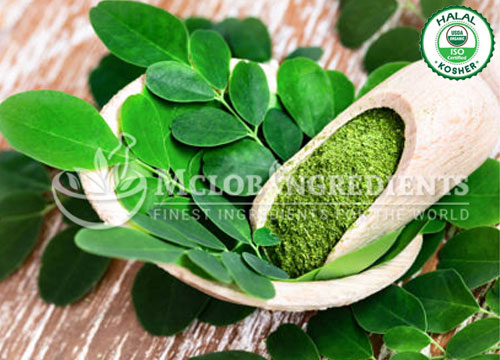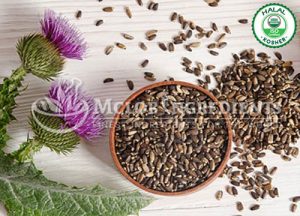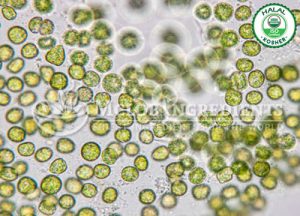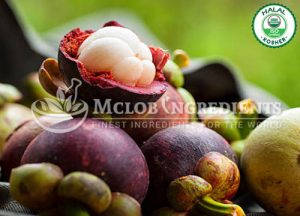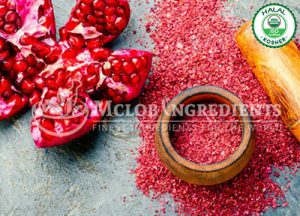Moringa is a small deciduous tree native to tropical Asia but also naturalized in Africa and tropical America. Flowers, pods, leaves, twigs, etc. are cooked and eaten. The leaves also are eaten raw when young, are especially nutritious and are high in Fe, K, and VitaminC. From the crushed roots, A horseradish-flavored condiment is prepared. Ben oil is extracted from the seeds which are used by watchmakers and in cosmetics; perfume makers value it for its retention of scents.
Moringa trees can reach a height of about 30 feet and have corky gray bark. The leaves are bi- or tripinnately compound. It has oval-shaped leaflets with conspicuous swellings (pulvini) where the parts join. The plants bear scented clusters of white pea-like flowers with five stamens held to one side.
Qualitative analysis :
The presence of alkaloids, saponins, and sterols in each extract was tested by using different methods. The tests were performed in triplicates to ensure the results. Detections of the following components:
Alkaloids
The extract of 10 ml was evaporated to dryness.2 ml of 2% HCL acid were added to the dry residue. Added a few drops of Wagner’s reagent to the solution. When reddish-brown precipitate occurred then the presence of alkaloids was confirmed.
Saponins
Precipitation and foam test method, Few drops of (1%) lead acetate solution were added to 1 ml of the extracts. An intense white precipitate appeared due to the presence of Saponins. Foam test also confirmed in the extract saponins are present, in which 20 ml of distilled water were added to 1ml of the extract in a graduated cylinder. The solution was shaken for 5 to15 minutes and the formation of stable foam indicated the presence of saponins.
Sterols
2 ml of concentrated H2SO4 was added to 2 ml of the extract. The formation of red precipitate indicated that sterols are present.
Quantitative Analysis:
Based on gravimetric tests, Different methods were used to determine the amount of the required constitutes in the pods. The estimations of the following:
Alkaloids
5 grams sample was weighed into a beaker and 200 ml of 10 % acetic acid in ethanol were added. The mixture was covered and then allowed to stand for 4 hrs. After that, the mixture was filtered and the filtrate was concentrated on a water bath at 100ºC, to one-quarter of the original volume. Conc.NH4OH was added to the extract in the form of drops until precipitation was completed. After settlement, the extract was filtered and the precipitate was washed with dilute NH4OH and then dried and weighed.
Saponins
20 grams of plant sample was put into a conical flask and then added 100 ml of 20% ethanol was. The solution was heated over a water bath at 100ºC for 4 hrs with continuous stirring at 55oC. The solution was then filtered. Another 200 ml of 20% ethanol residue was re-extracted. Over a water bath, the combined extracts were reduced to 40 ml. In 250 ml separating funnel concentrate was transferred. Added 20 ml of diethyl ether to the extract and was vigorously shaken. When the ether layer was discarded the aqueous layer was recovered. the purification process was repeated. Added 60 ml of n-butanol, the combined extract was washed twice with 10 ml of 5% NaCl. In a water bath, the remaining solution was heated. After evaporation, the sample was dried at 105ºC to a constant weight in the oven.
Sterols
The method was used with some modifications to get the gravimetric weight. The extract was cooled to room temperature 25°C, then filtered on cotton, and the residue was re-extracted twice by using 30 ml of chloroform for 15 min. The 2 filtrates were collected and were dried under reduced pressure at 40°C by, a rotary evaporator. In an oven, The residue was then placed at 80 °C until reached constant weight.
In vivo and vitro studies:
The antioxidant potency of different fractions of Moringa oleifera leaves (MOEF) was investigated by employing various established in vitro systems, such as β-Carotene bleaching, reducing power, DPPH/superoxide/hydroxyl radical scavenging, ferrous ion chelation, and lipid peroxidation. Based on in vitro antioxidant properties, a polyphenolic fraction of MOEF was chosen as the potent fraction and used for the DNA nicking and in vivo antioxidant properties. In oxidative DNA damage, MOEF shows concentration-dependent. It was also found to inhibit the toxicity produced by CCl4 administration as seen from the decreased lipid peroxides and increased glutathione levels. Among the antioxidant enzymes superoxide dismutase i.e. SOD and catalase i.e.CAT levels were restored to almost normal levels compared to CCl4 intoxicated rats. The HPLC analysis indicated the presence of phenolic acids and flavonoids. Thus, it may be concluded that the MOEF possesses high phenolic content. It has potent antioxidant properties, which may be mediated through direct trapping of the free radicals and also through metal chelation.
Side effects :
- Due to the presence of alkaloids in the plant Lower blood pressure and slow heart rate occurred.
- From moringa bark, Uterine contractions occurred.
- A chemical isolated from roasted moringa seeds causes the cell mutation.
- Interference with fertility.
- In stomach, gas or diarrhea due to laxative properties.
Drug-Drug Interaction: Taking moringa along with diabetes medication might cause your blood sugar level to go too low.
Contra-Indication: No contraindications for those suffering from thyroid problems and does not interfere with the normal activity of this gland.
Reference:
Abd Rani, N. Z., Husain, K., (2018). Moringa Genus: A review of phytochemistry and pharmacology
Anwar F, Latif S, Ashraf M, ( 2007). Moringa oleifera: a food plant with multiple medicinal uses.



